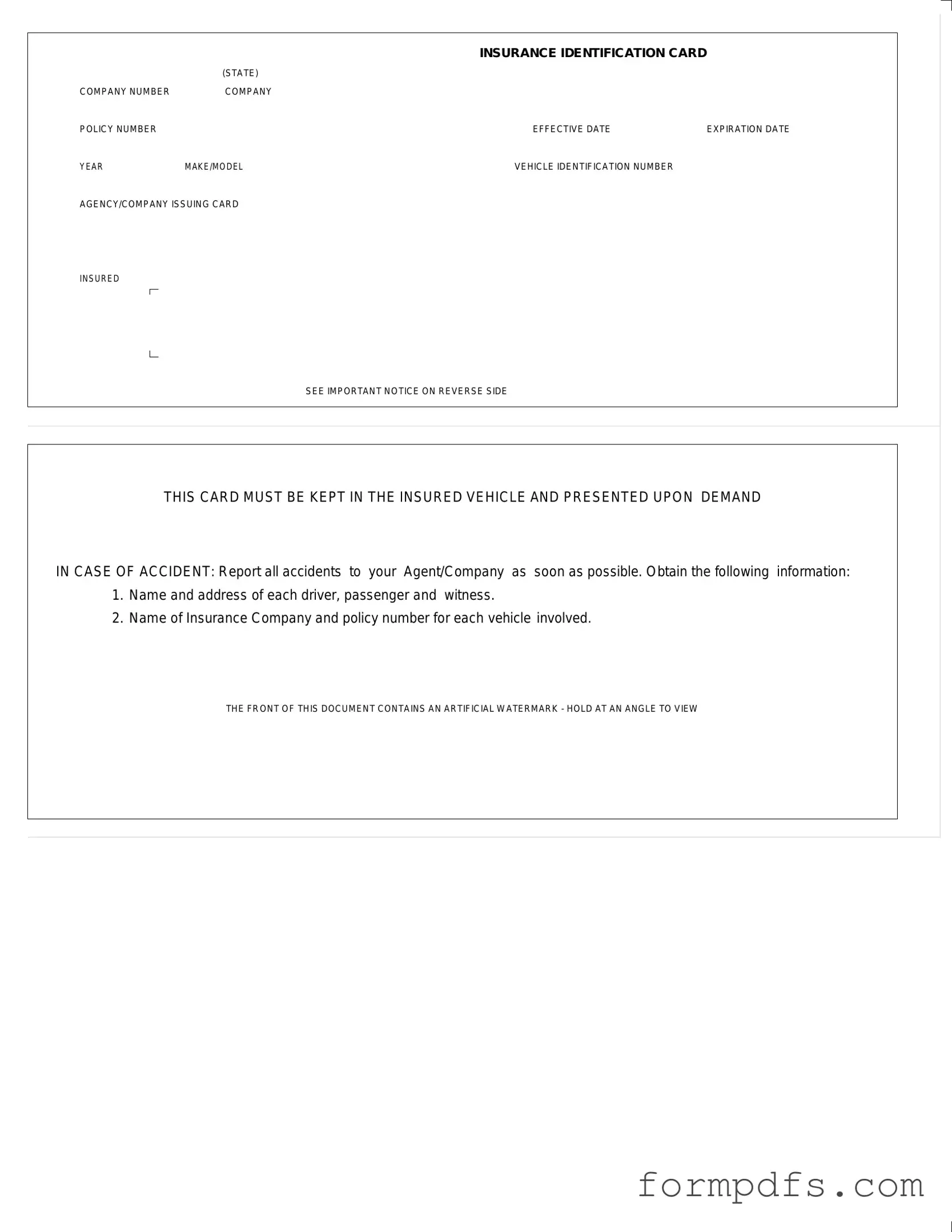What is an Auto Insurance Card?
An Auto Insurance Card is a document that proves a vehicle is covered by insurance. It includes essential information such as the insurance company name, policy number, effective dates, and details about the insured vehicle. This card is typically required to be kept in the vehicle at all times.
What information is included on the Auto Insurance Card?
The Auto Insurance Card contains several key pieces of information: the insurance company number, policy number, effective date, expiration date, year, make and model of the vehicle, vehicle identification number (VIN), and the agency or company issuing the card.
Why is it important to keep the Auto Insurance Card in the vehicle?
Keeping the Auto Insurance Card in the vehicle is crucial because it must be presented upon demand during an accident or traffic stop. Law enforcement and other parties involved may request this information to verify insurance coverage.
What should I do if I lose my Auto Insurance Card?
If the Auto Insurance Card is lost, contact your insurance agent or company immediately. They can issue a replacement card. It is important to have a valid card in the vehicle to avoid penalties or complications during an accident.
What should I do if I am involved in an accident?
In the event of an accident, report it to your insurance agent or company as soon as possible. Collect information from all parties involved, including names, addresses, and insurance details. This information is essential for filing a claim.
What does the artificial watermark on the card signify?
The artificial watermark on the Auto Insurance Card serves as a security feature. It helps to prevent fraud and ensures that the document is legitimate. To view the watermark, hold the card at an angle.
How can I check if my Auto Insurance Card is valid?
To verify the validity of your Auto Insurance Card, you can contact your insurance provider. They can confirm that your policy is active and that the details on the card are correct. Additionally, you can check your policy documents for coverage dates.
What happens if I fail to present my Auto Insurance Card when required?
Failure to present your Auto Insurance Card when required can result in fines, penalties, or other legal consequences. It is important to always have the card accessible in your vehicle to avoid such issues.
Can I use a digital version of my Auto Insurance Card?
Many states allow digital versions of the Auto Insurance Card, which can be accessed via mobile apps or websites provided by your insurance company. However, check local laws to ensure that a digital copy is acceptable in your area.
What should I do if my Auto Insurance policy changes?
If your Auto Insurance policy changes, such as a new vehicle or updated coverage, request a new Auto Insurance Card from your insurance provider. It is essential to have the most current information in your vehicle.
